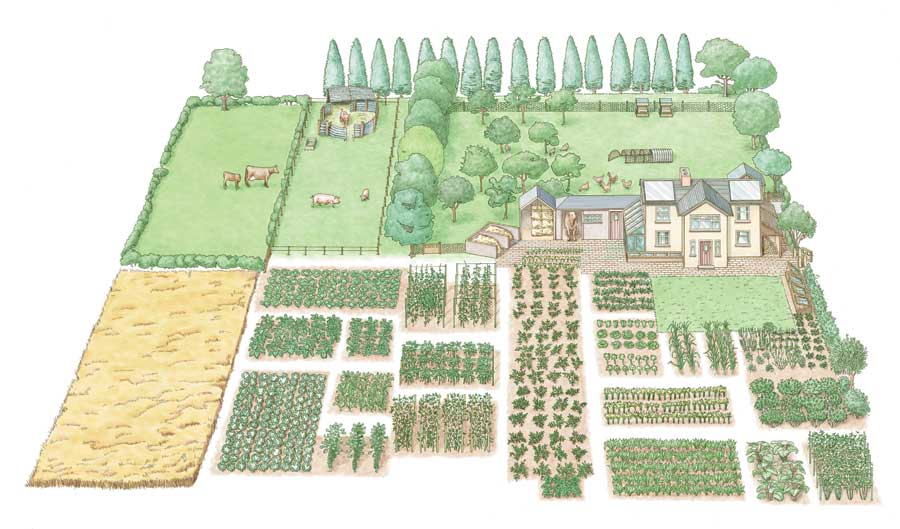Sustainable Farming
SUSTAINABLE farming is the heart and soul of this Website and our farming operation. Sustainable Farming utilizes the concept where the farm and its inhabitants are all fully supported by internal production on the farm.
ALL FUTURE GOALS and plans for Right Choice Farms 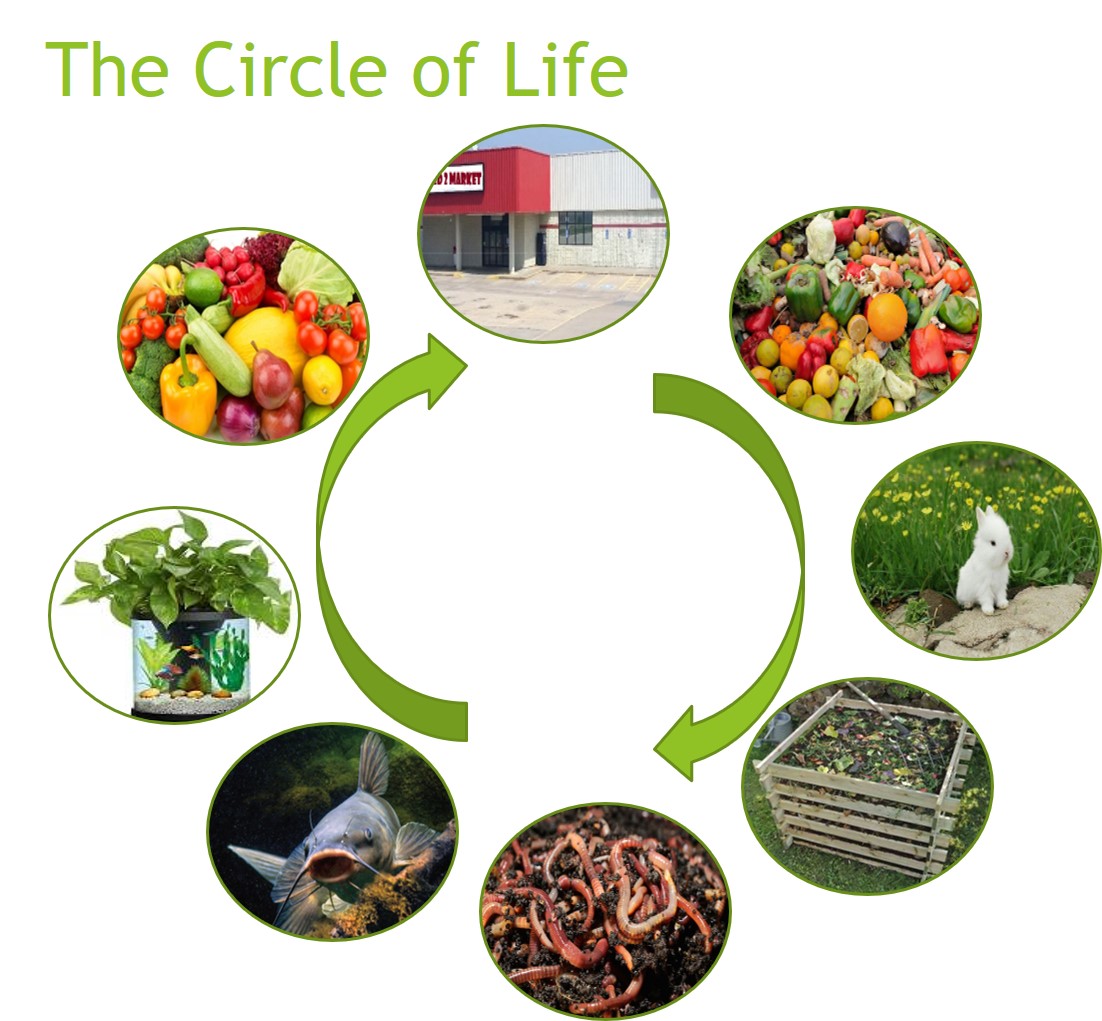 are in keeping with the single goal of making the farm completely self sustainable utilizing this Self Sustainable Concept.
are in keeping with the single goal of making the farm completely self sustainable utilizing this Self Sustainable Concept.
ADDITIONALLY, the secondary goal is to reduce and/or eliminate all outside inputs such as insecticides, herbicides, even fertilizers. All fertilizers should be produced onsite using products/materials that are available on the farm.
SEE THE IMAGE on the right for a diagram on how Sustainable farming works... This concept pictured utilizes Aquaponics, composting, insect crop production, animal management, and food preservation all working together to create a closed system that is biodiverse, ecologically regenerative and highly productive while minimizing the overall footprint of the farming operation.
ALMOST ALL plant waste plus rabbit and poultry waste can be used in your compost pile. See the Composting page for additional information on creating healthy compost for your plant and insect crops. Once a healthy compost pile has been started you introduce it to the insect/worm crops which in turn will be food for the fish in the aquaponics system. The fish waste is used to feed the plants. Aquaponics fertilized plants have been shown to produce 4 times per square foot of growing area versus traditional gardening. The produce is then used to feed the humans and animals and the cycle begins again.
Right Choice Farms is very excited about the concept and are hoping that the 20 acres of property will be able to feed thousands of people easily, without chemicals, without herbicides and by producing a healthy, sustainable farm with a completely ecologically and environmentally friendly system..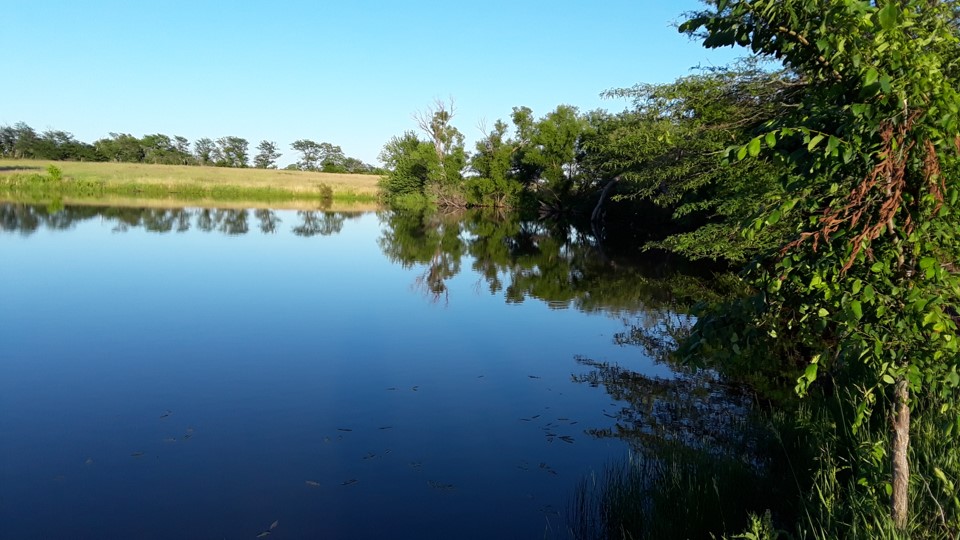
ANOTHER variation of Sustainable Farming is known as Regenerative Agriculture. Regenerative Agriculture utilizes the above proecesses with special focus on rehabilitating the soil. It is important to understand the role soil plays in agriculture. If the only role of soil was a base to grow plants in, then anything would suffice. Hydroponics and Aquaponics do not even use soil at all, so it's important to realize exactly what the plants get from the soil and how to maintain the health of the soil for a number of different reasons.
1) Soil is a growing medium. It's not the only growing medium but it is one of the best growing mediums. Soil provides nutrients to the plants. It provides carbon for the roots. It provides microorganisms which manage decompesition thus replenishing the soil with nutrients that are taken from the soil thru agriculture. The soil of the planet has been depleted by over farming with the use of chemicals and synthetic fertilizers killing the life within the soil. Plowing causes carbon to be released from the soil into the atmosphere where it does the least amount of good. At this point, 90% of all farming operations treat soil as a growing medium only. They are not replenshing the soil with nutrients and microbes. They are spraying the soil with fertilizers, because quality of produce no longer matters in this race to feed the world. Only quantity matters and slow growing plants do not produce large quantities of food... Or do they????
2) Many 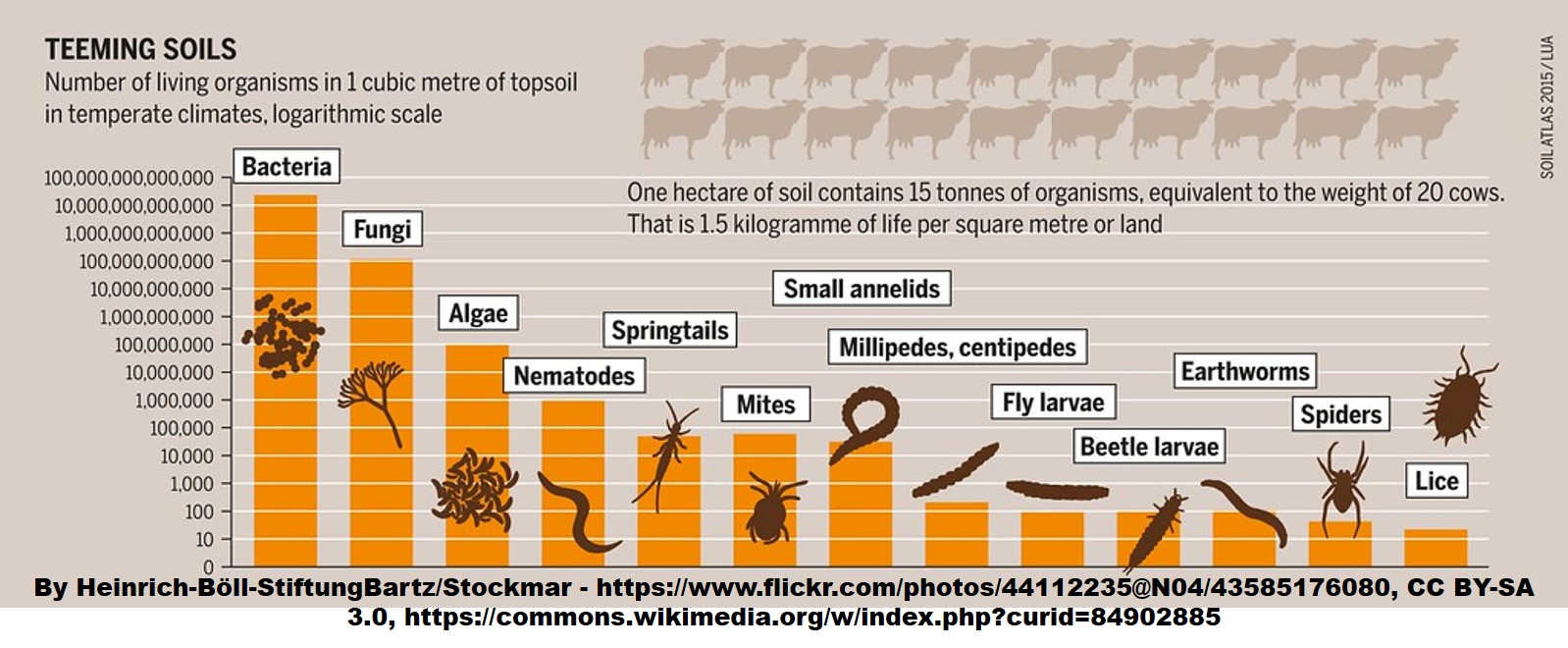 organisms call soil their home. One of the most endangered insects on the planet lives in the soil. It's not what you think, not some rare fighting beetle. It's the Bee. 70% of all Bee species worldwide live in the soil. They lay their eggs in the soil, the soil provides them with nutrition and shelter. We always hear about the mass depopulation of bees yet are knowingly destroying the bee's primary habitat. Only 30 percent of total bees do NOT live in the soil. Nematodes also live in the soil. The beneficial nematodes that eat the harmful nematodes that eat your roots and damage your plants. Well managed soil is teeming with lifeforms, beneficial lifeforms upon which mankind depends in order to grow food for the Billions of people on this planet.
organisms call soil their home. One of the most endangered insects on the planet lives in the soil. It's not what you think, not some rare fighting beetle. It's the Bee. 70% of all Bee species worldwide live in the soil. They lay their eggs in the soil, the soil provides them with nutrition and shelter. We always hear about the mass depopulation of bees yet are knowingly destroying the bee's primary habitat. Only 30 percent of total bees do NOT live in the soil. Nematodes also live in the soil. The beneficial nematodes that eat the harmful nematodes that eat your roots and damage your plants. Well managed soil is teeming with lifeforms, beneficial lifeforms upon which mankind depends in order to grow food for the Billions of people on this planet.
3) Soil 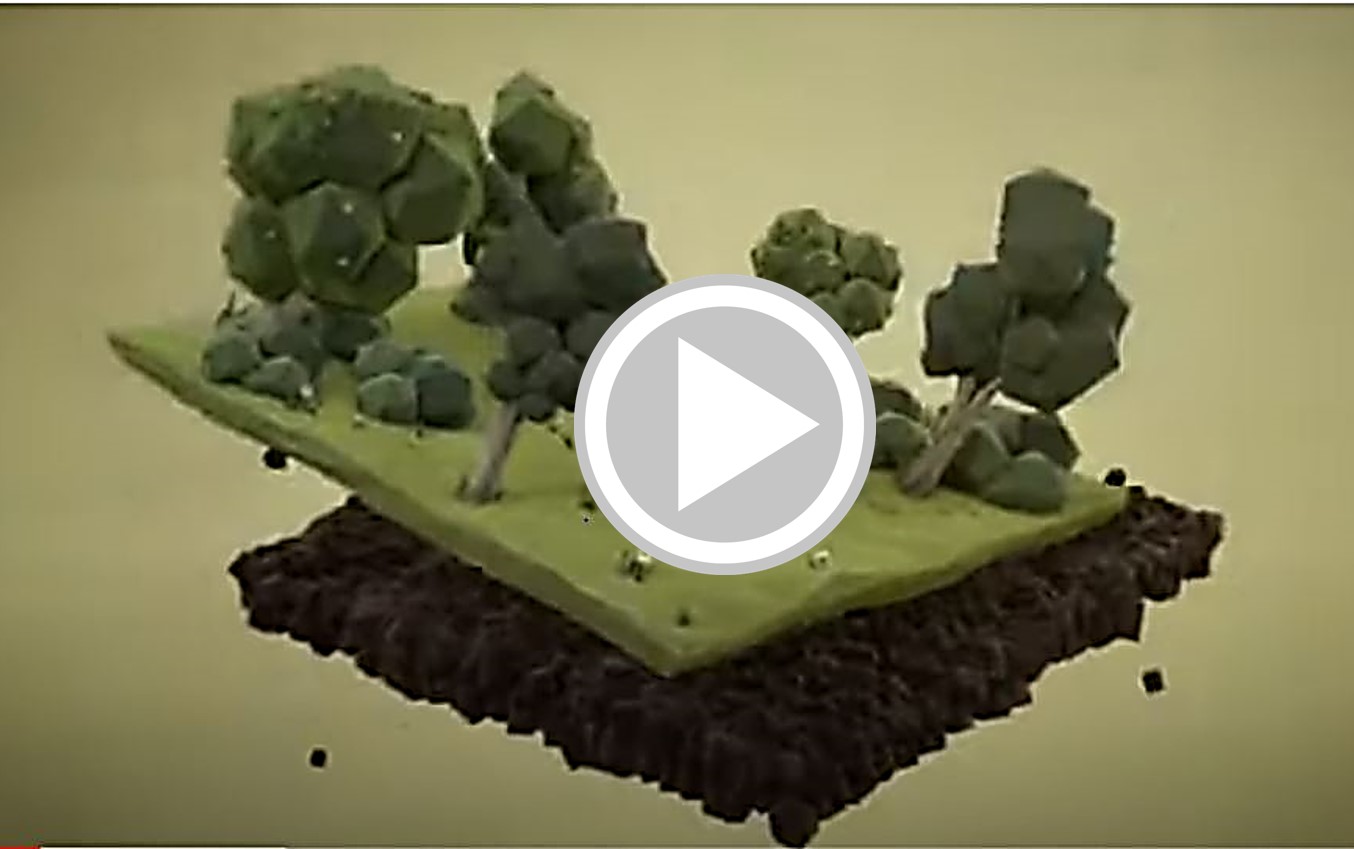 is the anchor for our plant's roots and gives them strength against winds, and weather. Soil devoid of nutrients and life is sand. Sand does not make a good base for growing plants, for anchoring the roots or for providing nutrients to the produce. Many people have heard about the dustbowls from the 20's but most people do not know the true reason for the dustbowl conditions. While the overfarming, lack of crop rotation and unused Terrace technology were largely blamed, soil management was the primary cause and is still an ongoing problem because soil quality is often still not being actively managed on a large scale. The midwest became a dustbowl because the soil had been depleted of all nutrients, carbon, microbes, and other life forms which hold the soil together. Farmers today do work to mitigate the symptoms of depleted soil, yet sometimes dont focus on actually mitigating the soil depletion. One of the largest causes of soil depletion is tilling the soil, which releases carbon from the soil into the atmosphere. Maintaining carbon levels in the soil is crucial to managing healthy soil. Beautiful soil can be turned to dust within 3 growing seasons. It can be replenished back to useful soil within 1 -2 growing seasons with aggressive treatment however complete recovery of carbon base can take decades without active carbon replenishment practices.
is the anchor for our plant's roots and gives them strength against winds, and weather. Soil devoid of nutrients and life is sand. Sand does not make a good base for growing plants, for anchoring the roots or for providing nutrients to the produce. Many people have heard about the dustbowls from the 20's but most people do not know the true reason for the dustbowl conditions. While the overfarming, lack of crop rotation and unused Terrace technology were largely blamed, soil management was the primary cause and is still an ongoing problem because soil quality is often still not being actively managed on a large scale. The midwest became a dustbowl because the soil had been depleted of all nutrients, carbon, microbes, and other life forms which hold the soil together. Farmers today do work to mitigate the symptoms of depleted soil, yet sometimes dont focus on actually mitigating the soil depletion. One of the largest causes of soil depletion is tilling the soil, which releases carbon from the soil into the atmosphere. Maintaining carbon levels in the soil is crucial to managing healthy soil. Beautiful soil can be turned to dust within 3 growing seasons. It can be replenished back to useful soil within 1 -2 growing seasons with aggressive treatment however complete recovery of carbon base can take decades without active carbon replenishment practices.
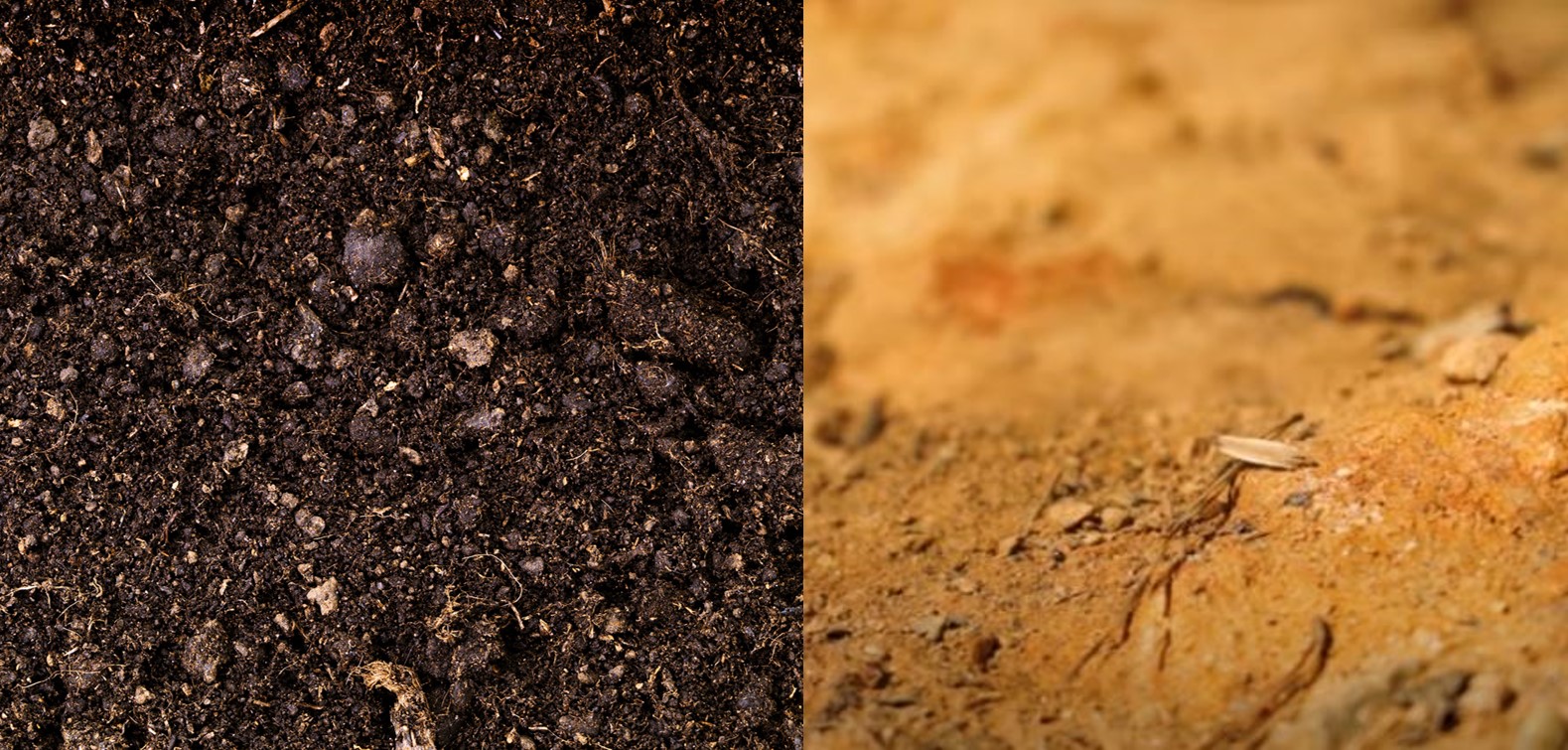 THE PROBLEM with chemicals and synthetic fertilizers is they dont replenish the life IN the soil, the microbes and bacterias. These synthetic alternatives only provide food for the plants and do not replenish the nutrients in the soil or rehabilitate the soil. The chemicals kill off all the microbes and the growing plants are further stripping the soil of any remaining nutrients not being provided by the synthetic fertilizers. The result is low-nutrition produce and nutritionally depleted dead soil base.
THE PROBLEM with chemicals and synthetic fertilizers is they dont replenish the life IN the soil, the microbes and bacterias. These synthetic alternatives only provide food for the plants and do not replenish the nutrients in the soil or rehabilitate the soil. The chemicals kill off all the microbes and the growing plants are further stripping the soil of any remaining nutrients not being provided by the synthetic fertilizers. The result is low-nutrition produce and nutritionally depleted dead soil base.
REGENERATIVE Agriculture puts the nutrients back into the soil and replenishes the life forms that exist within the soil naturally. This is mostly done with compost. It is also done by using cover crops and no-till farming methods. Most imporatantly, no chemicals or synthetic fertilizers can be used or they destroy all the progress done by the other methods.





